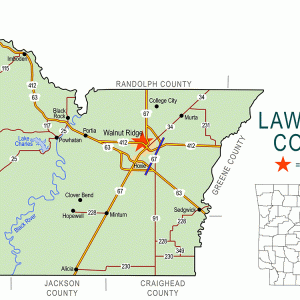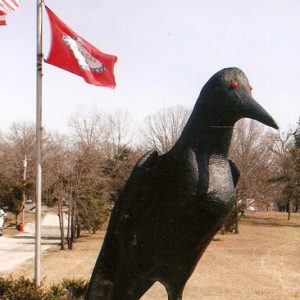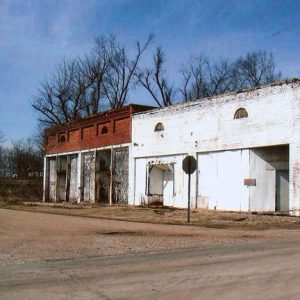calsfoundation@cals.org
Ravenden (Lawrence County)
| Latitude and Longitude | 36°14’00″N 091°15’06″W |
| Elevation: | 341 feet |
| Area: | 2.11 square miles (2020 Census) |
| Population: | 426 (2020 Census) |
| Incorporation Date: | November 15, 1901 |
Historical Population as per the U.S. Census:
|
1810 |
1820 |
1830 |
1840 |
1850 |
1860 |
1870 |
1880 |
1890 |
1900 |
|
– |
– |
– |
– |
– |
– |
– |
– |
– |
– |
|
1910 |
1920 |
1930 |
1940 |
1950 |
1960 |
1970 |
1980 |
1990 |
2000 |
|
– |
– |
– |
240 |
245 |
231 |
219 |
338 |
330 |
511 |
|
2010 |
2020 |
|
|
|
|
|
|
|
|
|
470 |
426 |
|
|
|
|
|
|
|
Ravenden, a small Lawrence County town near the Spring River, owes its origin to the completion of the railroad in the 1880s. With the development of the town along the tracks, it soon became an important trade center in the area. The business sector is no longer located on the original site. In 1947, the business sector slowly began to move to the newly completed U.S. Highway 63, where it remains today.
Long before white settlers began to develop the land along the Spring River, the Osage used the area as hunting grounds. The first important white settler to the area was William J. Ball, the son of a former British soldier who had fought in the Napoleonic Wars and later in the War of 1812 at the Battle of New Orleans. Ball settled near present-day Ravenden along the Spring River in 1858. He named his developing settlement Opposition, saying it was in opposition to the nearest town of Smithville (Lawrence County). It never grew very large, and, when bypassed by the railroad in the 1880s, it quickly died.
With the completion of the main line of the Kansas City, Fort Scott and Memphis Railroad in 1883, it was decided to build a trunk line to the resort town of Ravenden Springs (Randolph County) some seven miles to the north. The new town at the intersection was to be called Ravenden Junction. Though the trunk line was never constructed, a settlement that had begun to develop along the main line before its completion began to thrive, especially with the completion of a depot and section house. Eventually, two passenger trains a day serviced the town. The last passenger coach passed through on December 8, 1967.
Sam and Trick Ball, sons of William Ball, were leaders in the development of Ravenden, establishing some of the town’s earliest businesses, including a general store, a drugstore, and a cotton gin. Water was provided by a town well dug by Jimmie Williams in 1883. With the establishment of a post office in 1891, the name Ravenden became official.
The local economy was driven by the production of cotton and cattle, both of which could be shipped by train. The abundance of timber led to a thriving lumber trade, especially railroad ties. The town was incorporated on November 15, 1901. The Bank of Ravenden, established on December 15, 1905, was in continuous operation until closing during the Great Depression in 1930. Around 1905, John C. Chun founded a short-lived weekly newspaper called The Ravenden Hustler.
The first school building was constructed in 1887. This two-story frame structure was also used by local religious denominations and Masonic Lodge 451. A new brick schoolhouse was occupied in 1918 and remained in use until consolidation with Sloan-Hendrix in Imboden (Lawrence County) in the 1940s. At one time, there was also an African American school a few miles outside of town. Later, a black teacher known as Prince Thomas conducted classes for the black children in a small frame house in town.
The first church building was constructed in 1905 by the Church of Christ. The Methodists built a church in 1951, followed by the Baptists in 1958.
Sometime in the 1930s, the town suffered a major fire that destroyed or damaged all but one of the businesses on Main Street. During the 1940s, the town slowly began to relocate to U.S. Highway 63, then under construction. When it was completed in 1947, the entire business district of the town relocated to its present site. A modern city-wide water system was completed in 1970.
Ravenden still maintains a small business district located on U.S. Highway 63. Perhaps the most striking feature of the town is a twelve-foot-tall raven first constructed off the highway in 1991. Twice, vandals have burned the statue. The present raven was constructed in 1996.
Joel Carrington Hudson, a career diplomat at the U.S. Department of State who served in various posts around the world, was born in Ravenden.
For additional information:
Dail, Ted. “History of Opposition-Ravenden Area.” Lawrence County Historical Quarterly 2 (Spring 1979): 11–24.
Lawrence County, Arkansas: 1815–2001. Paducah, KY: Turner Publishing Company, 2001.
McLeod, Walter E. Centennial History of Lawrence County. Russellville, AR: Russellville Printing Company, 1936.
Smith, Francis. “History of Opposition.” Lawrence County Historical Journal 11 (Fall 2006): 10–20.
Mike Polston
CALS Encyclopedia of Arkansas








Comments
No comments on this entry yet.